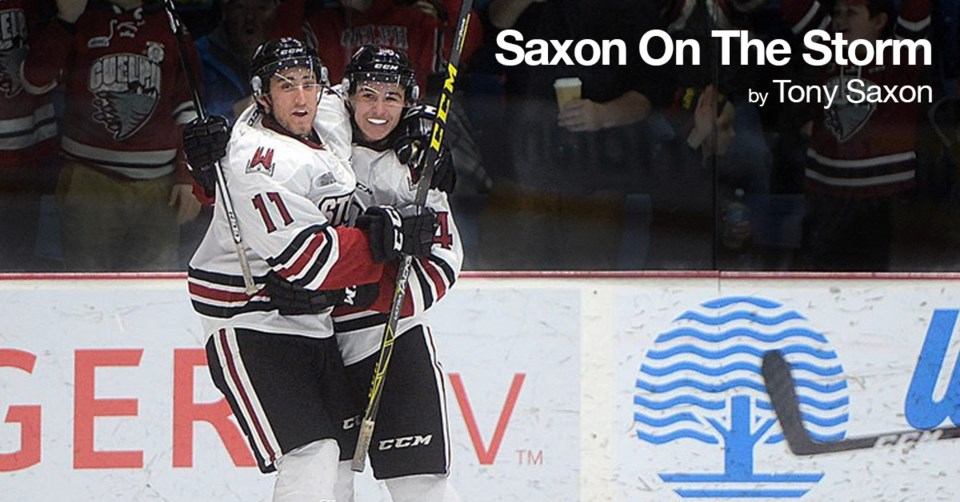Team sports are supposed to help build character, not damage it.
The spotlight shone brightly on a very ugly side of junior hockey’s not too distant past this week, playing out primarily on the Twitter account of former OHLer and NHLer Daniel Carcillo.
Hazing: Rookie players allegedly abused and made to do unthinkable things and have unthinkable things done to them.
Carcillo’s stories of abuse (and make no mistake about it, they are tales of abuse) were later publicly supported by several of his fellow rookies on the 2003-2004 Sarnia Sting and backed by players who had similar experiences on other junior teams of the era.
Those stories include the “hot box,” where seven rookies were forced to strip naked and cram into the bus washroom, a player’s penis being repeatedly dipped in painful ointment, being beaten with the paddle of a goalie stick and strapped to a table and whipped with a belt.
The allegations centre primarily on that particularly Sarnia team, and while that team may be an extreme, it is not an isolated incident.
To be clear, no member of any Guelph Storm team has come forward with accusations, but it would be naive to think that hazing, at some level, hasn't been a part of its dressing room in the past.
No one has come out and said that what Carcillo has described didn’t happen. The coach of the team, one-time Guelph Plater Jeff Perry, said he didn’t know it was going on and would have stopped it had he known.
Carcillo said some of those responsible for the hazing have reached out to apologize.
"We don't blame them because they didn't know," said Dave Pszenyczny, another rookie on that Sarnia team told the newspaper in Quad City, Iowa, where he now coaches.
"They got it just as bad. I don't know to what extreme, but they got it too, but the part is somebody should have stopped everything.”
Damn right they should have. And they’re called the adults who knew it was going on. The ones on that bus. The ones in that dressing room.
Those 16 and 17 year olds, by and large, took the abuse because it was “tradition” and, more importantly, speaking out would get them ostracized on their team and perhaps adversely affect their chance of chasing their hockey dreams.
“You’re supposed to keep quiet. You’re in the hockey community,” Ryan Munce, another of the alleged Sarnia victims, told the CBC.
But this wasn’t about some good-natured fun, a slightly-embarrassing right of passage that you can laugh about once it’s over.
This was about abuse that had lasting and damaging effect on people’s lives.
Carcillo is no angel. A former high school classmate took to Twitter after Carcillo went public, saying that Carcillo was guilty of similar behaviour when he was at the high school. He didn’t deny it and apologized.
Carcillo was motivated to speak publicly about what went on after hearing about the hazing incidents at St. Michael’s College, the private boys school in Toronto.
On a personal level, what Carcillo did was lift a burden he has been carrying around for many years. He said he felt like 100 pounds had been lifted off his shoulders and that it was helping with the healing process.
Carcillo contacted the OHL and was instrumental in getting the league to crack down on the behaviour.
Things got better after Carcillo spoke up to league back then.
Now he’s hoping that by speaking up again, this time publicly, it helps eliminate the culture that allows it to still exist.
The OHL issued a statement this week.
“As a league we believe that hazing is reprehensible and we have a zero tolerance for any such action,” it read.
“In 2006 the league’s anti-hazing policy was enhanced and today all OHL players are educated on this important subject matter annually through their member team. All players acknowledge to the league in writing on an annual basis that they understand league policy and are encouraged to bring any concerns forward without fear of reprisal.”
There are a number of other positive initiatives the league has put in place in recent years centred on the well being of players.
“Our hope is that through conversation, education, and awareness, the attitudes that lead to hazing behaviour and these unthinkable actions disappear from sport and society.”
Amen.
(NOTE: For more on this topic check out Carcillo’s Twitter account @CarBombBoom13 or the work of Canadian Press reporter John Chidley-Hill, who has been at the forefront of the media coverage.)
